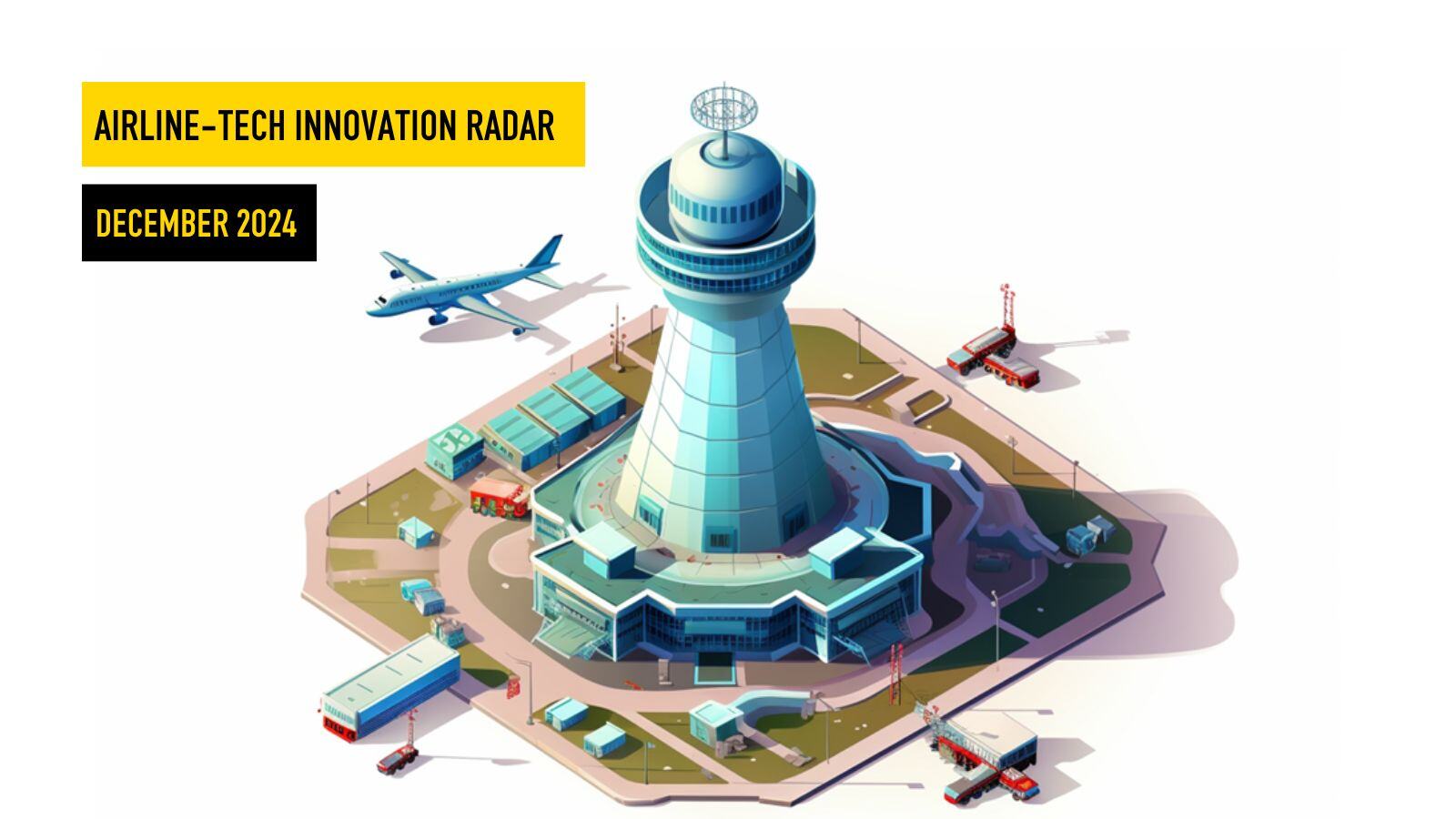Welcome back to the December edition of our OAG Airline-Tech Innovation Radar, the final installment of the year, where we turn our focus to Artificial Intelligence (AI)—a technology trend that continues to heat up across all industries, including aviation.
This year, the buzz around Generative AI has prompted industries worldwide to actively pursue AI applications. Despite the excitement, practical use cases in aviation that address real-world operational challenges have been few and far between.
However, this month's edition highlights three significant innovations, all spearheaded by airlines or airports themselves, demonstrating how AI can streamline operations and enhance the efficiency of the aviation sector.
As we close the year, these examples showcase that AI isn’t just about hypothetical potential in the future; it’s about actionable solutions that are reshaping the way our industry operates today!
Innovation #1: AI-Assisted Air Traffic Control at London Heathrow Airport

London Heathrow Airport, one of the world's busiest travel hubs, is piloting a cutting-edge AI system named AIMEE to assist Air Traffic Controllers (ATC).
Here is how it works:
- AIMEE AI integrates radar and video data to monitor aircraft movements across the airfield, providing a comprehensive visualization of their positions.
- Specifically, the system can track flights on the arrival runway from the moment an aircraft touches down until it exits the runway. This ensures that each phase of the aircraft’s runway activity is safely completed.
- Throughout the pilot, which has already been tested on 40,000 flights in London's congested airspace, airport staff continuously assess the accuracy, consistency, and clarity of AIMEE AI's outputs.
Why does this innovation stand out?
The introduction of AIMEE AI at London Heathrow is particularly relevant for several reasons:
- With ongoing staffing shortages in ATC across many Western countries, including Europe and the U.S., and air travel demand recovering strongly post-pandemic, there is a pressing need for innovative solutions to manage growing air traffic demands efficiently. AIMEE AI helps address these challenges by augmenting the capabilities of human controllers, reducing the workload (per flight) and the potential for human error.
- AIMEE is a key component of Heathrow’s "Digital Control Tower," which represents a new layer of digital technology enhancing the traditional, out-of-the-window view from control towers. This blend of AI with human skills and judgment showcases a forward-looking approach to air traffic control, combining the best of technology and human expertise.
We believe AIMEE's AI pilot at London Heathrow Airport marks a significant innovation in the airport context, offering a scalable solution to enhance safety, reduce controller workload, and manage increasing flight volumes more effectively.
Innovation #2: AI-Powered Baggage Management by Japan Airlines

Japan Airlines, in collaboration with NEC Corporation, has pioneered a trial of the "NEC Baggage Counting Solution" at Tokyo International Airport (Haneda). This AI-driven system aims to streamline the boarding process by efficiently monitoring carry-on luggage.
Here is how it works:
- Cameras installed at boarding gates capture images of passengers’ carry-on items as they prepare to board.
- The AI system analyzes the quantity and type of baggage, estimating the space each item will occupy in the overhead bins in real-time.
- The system alerts gate personnel when the aircraft’s preset storage capacity is approached or exceeded, ensuring efficient use of space.

What makes this innovation special?
Japan Airlines' use of AI for baggage management directly addresses several pain points for both travelers and airlines:
- Excess cabin baggage often leads to congestion during boarding, with passengers struggling to find space in overhead bins. This can cause delays and stress as baggage is shuffled around or even removed to the cargo hold. The Baggage Counting Solution proactively monitors carry-on capacity, potentially speeding up the boarding process and reducing flight delays.
- The AI system provides a non-intrusive, objective method to monitor carry-on luggage, which can help enforce airline baggage policies more systematically. This approach is especially beneficial for airlines looking to manage cabin luggage without causing passenger dissatisfaction or delays at the gate.
- With a more systematic approach to monitoring baggage, airlines have the potential to implement fees for excess luggage more effectively. The AI system's ability to accurately assess and report luggage quantities can facilitate the application of these charges, providing a clear ancillary revenue stream that is fair and transparent to passengers.
In summary, the trial of the Baggage Counting Solution by Japan Airlines exemplifies how AI can enhance the efficiency and customer experience of air travel by tackling specific logistical challenges at the boarding gates.
Innovation #3: AI-Powered Smart-Stand Technology at Gatwick Airport

Returning to London for our third and final innovation of the month, we shift our focus from Heathrow to Gatwick Airport. Here, in collaboration with its largest airline, easyJet, Gatwick has launched a pilot project utilizing "smart-stand technology" to enhance how aircraft turnarounds are managed, leveraging the power of AI to optimize operations at one of Europe’s major air traffic hubs.
Here is how it works:
- At Gatwick, turn coordinators (TCOs) now manage aircraft turnarounds from their control centers, employing a system that automatically tracks all steps of the turnaround process through computer vision.
- This system then uses AI to provide real-time projections and updates, allowing coordinators to know when an aircraft is ready for takeoff without the need for manual checks on individual tasks such as fueling, maintenance, catering, luggage loading, and more.
- Initiated in May of this year, this pilot is set to run until the summer of 2025.
Why does this innovation stand out?
Gatwick Airport’s adoption of such smart-stand technology marks a significant stride in airport operations, particularly impactful for an airport operating with only one runway:
- The technology enables turn coordinators to monitor multiple aircraft turnarounds simultaneously, significantly reducing manual workload and the potential for human error.
- With AI-driven insights, issues during the turnaround process can be identified and addressed much earlier, potentially speeding up the entire process and reducing delays.
- Automated dashboards and reporting allow turn coordinators to monitor and analyze turnaround processes systematically. This data is invaluable for ongoing operational improvements and understanding broader trends that can influence future turnaround strategies.
The December Wrap-up
The innovations showcased in this edition are just the beginning of a transformative journey for AI in airport and airline operations. As we look ahead, we expect to see an influx of even more interesting AI pilot applications across the aviation industry. These advancements will be mission-critical as our airport systems face increasingly rigorous demands. With travel volumes rising and traveler expectations for punctuality and robust operations holding firm, the pressure on airport infrastructure and management will only intensify.
AI offers promising solutions to these challenges by enhancing efficiency, reducing delays, and improving overall passenger experiences.
Stay tuned as we continue to monitor and report on these developments, bringing you the latest and most impactful innovations that are setting new benchmarks in the aviation sector.
Subscribe to receive bi-weekly Travel Tech Insights on LinkedIn here.



